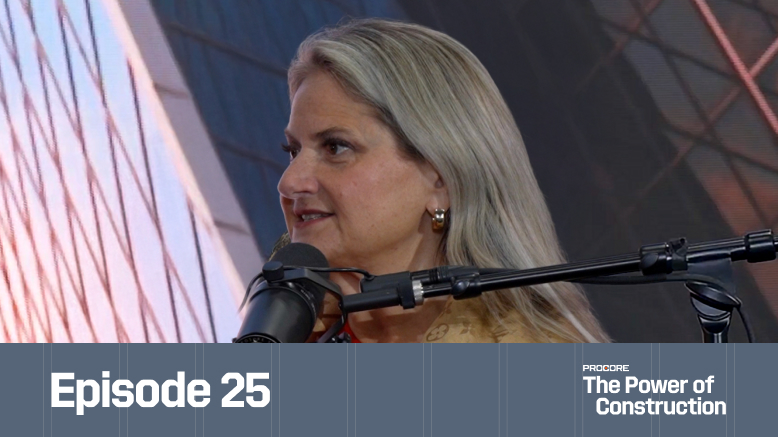— 10 min read
Self-Perform Construction: Pros, Cons, and Considerations


Last Updated Oct 30, 2024

Scott Bornman
Principal, Operational Excellence
15 articles
Scott Bornman is a managing strategic product consultant at Procore Technologies. Scott began his long construction career after a successful 8+ years in the U.S. Army, where he selected to be U.S. Army Recruiter following Desert Shield/Desert Storm. Scott has had many roles in the construction field since then, working his way from a project superintendent, to an owner's rep, to a senior project manager and even Vice President of Construction at Bognet Construction and Director of Construction at Plaza Construction before joining the team at Procore.

Kacie Goff
Contributing Writer
91 articles
Kacie Goff is a construction writer who grew up in a construction family — her dad owned a concrete company. Over the last decade, she’s blended that experience with her writing expertise to create content for the Construction Progress Coalition, Newsweek, CNET, and others. She founded and runs her own agency, Jot Content, from her home in Ventura, California.
Last Updated Oct 30, 2024

General contracting companies have to balance risk management with the desire to maximize profit margins. Greater control of variables on a project can make this easier. That’s why some firms increasingly turn to the self-perform construction model.
With this path forward, rather than going through a full buyout, the general contracting firm might instead decide to self-perform some or all of the work. When this decision makes sense depends on the company, their team, and the project. As a result, general contracting firms should carefully weigh the pros and cons of this option and, when using it, apply best practices. This guide can help with all of that.
Table of contents
Understanding Self-Perform Construction
Self-perform construction is what it sounds like. Rather than working with specialty contractors to perform work within certain trades — like mechanical or electrical work, for example — the general contractor (GC) performs that work using their own labor pool.
The amount of work that gets self-performed depends on the project and the GC’s staffing and competencies. Outside of specific categories (e.g., heavy civil, industrial, horizontal construction), it’s relatively rare for firms to self-perform 100% of the work required in the contract documents. Instead, the GC may self-perform only the portion of the work that aligns with their staff’s abilities and availability.
As a construction approach, self-perform construction is full of both opportunity and risk. The GC firm could potentially earn more on a project by taking this tack. Having more control over the required work and how it happens can streamline scheduling and build in a bigger profit margin. Using trusted internal employees can also improve work quality and minimize rework, too.
All of that said, self-perform construction requires the GC to take on more of the risk of the project, and more risk between projects.
If work opportunities dry up, the employees the firm has on staff to self-perform work still need to get paid. The GC then faces the tough decision of continuing to cover that overhead with little (or even no) money coming in, or laying those people off. The latter tarnishes the company’s reputation as an employer while simultaneously freeing up that talent to get swooped up by the competition.
As a result, it’s important for GC firms that self-perform construction to plan their approach carefully.
Self-Performance in Contract Language
Some requests for proposal (RFPs) will specify how much work the GC needs to self-perform, or certain work divisions that will require self-performance.
In other cases, the GC will volunteer to self-perform. The firm then lays out its plans around self-performance in the collateral material it submits during the bidding process. Its internal preconstruction and estimating teams can help to make educated decisions around when it makes sense to self-perform work, and when it’s more advisable to work with a trade partner.
GCs generally need to honor anything they submit to the owner concerning what work will be self-performed. If something comes up — say an internal team member becomes ill — and there will be a significant deviation from what’s captured in the contract documents, the GC needs to approach the owner to get permission to move forward.
Some instances also arise in which the GC proposes self-perform construction in their bid documents, but the owner redirects them. Say, for example, that the firm includes in its proposal its plans to self-perform 14 trades. The owner may opt to go through the bid book and see if any specialty contractors can perform the work for a lower price (note that this doesn’t technically constitute bid shopping and as a result is an allowable practice).
Alternatively, the owner may have an existing relationship with a specialty contractor that they want to use on the project. The owner has the ability to dictate that the GC self-performs work in some of the proposed trades but uses chosen trade partners in others.
Stay updated on what’s happening in construction.
Subscribe to Blueprint, Procore’s free construction newsletter, to get content from industry experts delivered straight to your inbox.

Types of Projects Where Self-Perform Construction Is Common
Certain categories of projects tend to see a lot of self-perform construction. This approach is commonly deployed on:
- Oil, gas, and petrochemical projects
- Solar and battery energy storage systems (BESS) construction
- Utility projects
- Manufacturing projects
Evaluating Self-Perform Construction
For construction companies trying to determine if the self-perform construction model makes sense for their team, it helps to weigh the pros and cons.
Benefits
GC firms that self-perform construction report seeing gains in the following areas:
Greater Control
Self-performing work eliminates some of the uncertainty that comes from working with external partners. From scheduling to safety training, self-performance allows the company a greater span of control. That extends to hiring and firing control and pay rates for labor.
Relying on internal teams can make it easier to move resources around as needed on various projects, and it can eliminate the frustrations that arise when trade partners fall behind schedule or don’t perform work as expected. Instead of needing to enforce the contract, the GC firm can correct issues by leveraging the personal relationships the company has with its staff.Potential for Higher Profit Margins
If the GC firm can maintain a steady stream of work performed reliably by stable employees, it can increase revenue with self-performed work. Generally, the hourly rate the GC firm pays its employees falls below the burdened hourly rate they’d pay for labor from an external trade partner.
To maximize profit margins, though, firms need to focus on resource management. That means sending the highest-paid performers to the highest-paying jobs.Reduced Rework
When everyone is literally on the same team, it’s easier to align priorities and processes. Plus, if the GC firm has built a solid company culture in which employees feel they’re contributing and their work is valued, they’re more likely to take pride in what they do. All of this can help to improve work quality, directly reducing rework.
Drawbacks
That said, choosing to self-perform work isn’t without its risks, including:
Overhead Management
The self-perform construction model requires a larger payroll. To keep those people employed, the GC may need to take less-than-ideal projects, particularly during lean times. Each person the GC decides to hire internally represents a significant dollar investment in the form of their wages and benefits, which creates higher overhead costs. If the firm isn’t landing the contracts it needs to fully allocate that person’s time to paying work, that can mean taking a loss.
Employment & Culture
If an employee's work isn’t meeting quality expectations or deadlines, it puts the GC in a difficult position. It is often more difficult and expensive to terminate an underperforming employee than it is to fire a subcontractor who can't meet contractual obligations. Beyond that, building a company culture that supports and values all of the different trades equally can be an organizational struggle.
Training & Specialization
Self-perform construction can lead the GC to become a jack of all trades and master of none. It can be difficult to carry team members with niche specialties (e.g., terrazzo floors, high-end marble, historic renovations), but there’s inherent risk in sending team members out to handle projects they’re not trained to do.
In addition, training all team members in the different trades to ensure they stay current with the latest code updates and best practices can be difficult. Because of all of these factors, it’s relatively rare to find work self-performed on the highest-end projects.Liability
If something goes wrong with self-performed work, there’s no one to pass liability to. The GC firm has to take sole responsibility — and assume the burden of correcting the problem using its own resources.
Considerations for Contractors
Before opting to self-perform construction, GC companies need to carefully weigh what this method would mean for their teams, their quality of delivered work, and their profit margins. Some GCs determine that the drawbacks outweigh the potential gains and decide to exclusively work on projects that bring in trade partners. Others primarily focus on contracts that allow for self-performance.
To determine the right option for a specific company, its leadership should consider three main areas: Staffing, proximity and local regulations.
Staffing
Projects can’t be chosen solely on the likelihood of success. The GC also needs to evaluate staff availability. Managers must diligently allocate resources, ensuring high-priced staff work on higher-margin jobs whenever possible.
Since carrying people is inherently risky, general contractors who are primarily concerned with managing liability may opt against self-performance, particularly where talented subcontractor pools exist.Office Proximity
The employees that get deployed on a project require support. As a result, the project’s proximity to the GC’s headquarters or another regional office is key.
Extensive travel can be prohibitively costly, and the GC might struggle to mark it up enough when billing to cover that burden. Remote jobsites make it harder to provide employees with the resources required to do the job, particularly when it comes to equipment.Local Regulations
Location-based set-asides and labor agreements are an important consideration for project selection.
Some jurisdictions enforce set-asides requiring GCs to hire a certain percentage of disadvantaged employee groups for each project.
Other areas have labor agreements, including union requirements. These local considerations might affect the GC’s ability to self-perform construction.
Best Practices for Self-Perform Construction
For firms that decide to self-perform some or all of the work on a project, applying best practices helps to achieve the best outcome.
Invest in the team.
The success of self-performed projects hinges directly on a strong staff to do the actual work.
To ensure team members are able to best complete their tasks, invest in a learning management system (LMS) or other means to offer ongoing training. That training platform should offer education around all of the appropriate specialties for which the GC firm self-performs work.
Investing in the team also means being strategic about the projects the company bids. When looking for ways to fill future holes in the schedule, the bidding team should hunt for projects that utilize team members’ skills and expertise. Once a contract is secured, the scheduler should aim to assign roles that align with peoples’ passions whenever possible.
Standardize wherever possible.
There’s an adage that can help GC companies build quality into self-performed work: inspect what they expect. A review of installed work can help to identify areas for improvement. As a result, it benefits firms to implement a standardized status review process.
Additionally, GCs who choose to self-perform work benefit from templating their processes. Established procedures for trades the company self-performs make it easier to ensure quality and ramp up new hires.
Balance planning and flexibility.
To achieve successful self-performance, carefully plan by scheduling employees' time and maintaining and positioning equipment to ensure it is available when needed. The GC firm should emphasize the importance of thorough documented planning for all of its team members.
At the same time, though, the company needs to stay flexible and be ready to pivot when needed. That means you should change tack if self-performing in certain trades goes less well than expected or take corrective measures with low performers, even if the team likes them.
Using Software To Support Self-Perform Construction
From resource planning to training through an LMS, a workforce management platform can enable GCs to more effectively allocate and track human resources across self-perform projects. Good estimating and bidding tools can also deliver benefits when it comes to strategically choosing projects that best use the GC’s full team.
Was this article helpful?
Thank you for your submission.
100%
0%
You voted that this article was . Was this a mistake? If so, change your vote
Scroll less, learn more about construction.
Subscribe to The Blueprint, Procore’s construction newsletter, to get content from industry experts delivered straight to your inbox.
By clicking this button, you agree to our Privacy Notice and Terms of Service.
Thank you!
You’re signed up to receive The Blueprint newsletter from Procore. You can unsubscribe at any time.
Categories:
Written by

Scott Bornman
Principal, Operational Excellence | Procore Technologies
15 articles
Scott Bornman is a managing strategic product consultant at Procore Technologies. Scott began his long construction career after a successful 8+ years in the U.S. Army, where he selected to be U.S. Army Recruiter following Desert Shield/Desert Storm. Scott has had many roles in the construction field since then, working his way from a project superintendent, to an owner's rep, to a senior project manager and even Vice President of Construction at Bognet Construction and Director of Construction at Plaza Construction before joining the team at Procore.
View profile
Kacie Goff
Contributing Writer | Procore Technologies
91 articles
Kacie Goff is a construction writer who grew up in a construction family — her dad owned a concrete company. Over the last decade, she’s blended that experience with her writing expertise to create content for the Construction Progress Coalition, Newsweek, CNET, and others. She founded and runs her own agency, Jot Content, from her home in Ventura, California.
View profileExplore more helpful resources

Profit from Predictability: Construction Software as a Business Strategy
For general contractors, managing complex, multi-million-dollar projects, every project phase — from planning and budgeting to on-site execution — is an opportunity to lose time and money. Construction software is...

Defending Against Financial & Legal Risks on Megaprojects
The construction industry has seen marked growth in megaprojects. Some experts classify any project over $500 million as a megaproject, while others argue that the build needs to be $1...

Unlocking Project Intelligence: Moving from Raw Data to Actionable Insights
The construction industry faces a wide range of challenges, from ongoing labor shortages to frequent cost overruns. But some the biggest hurdles all stem from unpredictability. The general contractors (GCs)...

Who is accountable for innovation in construction?
Everyone says construction needs to innovate—but no one agrees on who’s actually responsible for making it happen. Is it the owner? The builders? The tech vendor? Or is innovation everyone’s...
Free Tools
Calculators
Use our calculators to estimate the cost of construction materials for your next project.
Templates
Find a template to help you with your construction project tasks.
Material Price Tracker
Get the latest U.S. retail prices and view historical trends for common building materials.
Glossary
Explore key terms and phrases used in the industry.
